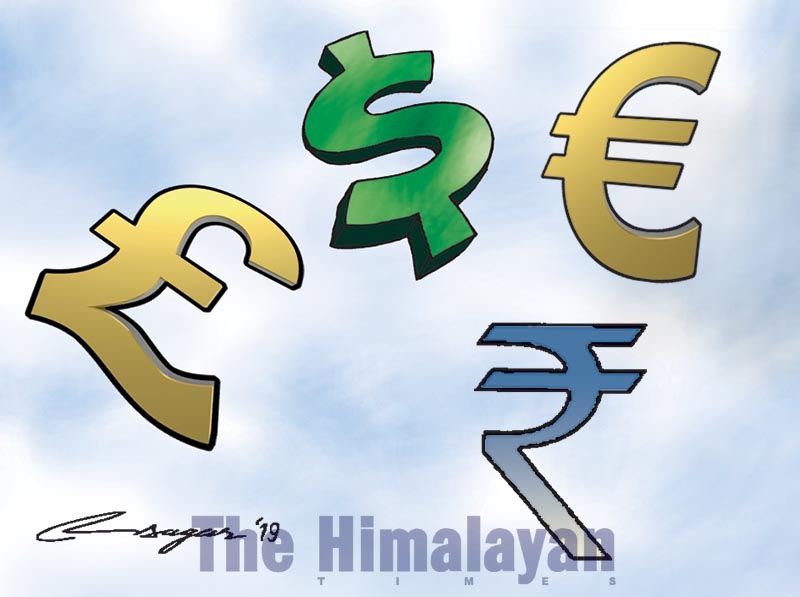Time for a currency symbol: Matter of national identity
An interesting fact: Seventeen out of the 20 most traded currencies in the world have a strike in their symbol, the remaining three do not have a proper symbol. Even Bitcoin has two partial strikes
When it is a question of money, everyone is of the same religion - these beautiful nuggets of wisdom by Voltaire unveil the strength of money above everything. Most of the monies are represented through recognisable signs throughout the world, which are called currency symbols. A currency symbol is a graphic symbol used as shorthand for a currency’s name, especially in reference to amounts of money. We all know what they mean, and have some idea of the value of what they represent. But how did these famous currency symbols get their shapes, and why is it important to symbolise them?
Older currency symbols have evolved slowly, often from previous currencies. The dollar and peso symbols originated from the mark employed to denote the Spanish real de a ocho, whereas the pound and lira symbols evolved from an L standing for libra, a Roman pound of silver. Newly invented currencies and currencies adopting new symbols have symbolism closer to their adopter. The added centre bar in the real sign is meant to symbolise stability. The new Indian rupee sign is a stylised combination of Latin and Devanagari letters.
Perhaps the most recognisable money symbol in the world, the dollar, has a pretty great story. The dollar can be traced back to Spain in the late 18th century. ‘Ps’ was the abbreviation used to represent the Spanish peso. A popular theory is that the S came to be written over the top of the P, creating what we now recognise as the dollar sign $. The pound symbol £, which most often signifies the British pound sterling, comes directly from a capital L for Libra. Libra in Latin means scales or balances, and was a basic unit of weight in the Roman Empire.
The Euro, €, is a baby, as far as historical currencies and their symbols are concerned. The Euro was launched on January 1, 1999, and the full currency takeover took place in 2002, with 14 billion banknotes and 52 billion coins produced and distributed all over the world. The Euro symbol was inspired by the Greek letter epsilon (ϵ), a reference to the cradle of European civilisation. It also stands for the first letter of the word ‘Europe’ in the Latin alphabet, while the two parallel lines running through the symbol signify stability.
In 2009, the Indian government aimed to raise the status of its currency, the rupee, by assigning it a currency symbol. The symbol represents the historical and cultural ethos of the country. The design is based on the Indian tricolor.
When writing currency amounts, the location of the symbol varies by currency. Many currencies in the English-speaking world and Latin America place it before the amount. In many European countries such as France, Germany, Greece, and the Scandinavian countries, the symbol is usually placed after the amount. However, placing the currency symbol before the amount is widely practiced.
Needless to say, money is power and power is important. Important things need an easy and universal way of communication to reach us all, especially to those whose lives depend on the €, the ¥ and the $. Every nation has a symbol of its own. A fine example is a country’s flag. Almost every religion, culture, deity, language or group of people has a symbol or two or even more. We just are not familiar with all of them because they either don’t come into play in our lives.
There is a reason why some countries in Europe and nations like USA, Canada and China have currency symbols, and some other countries don’t. The countries mentioned above are powerful and are key players in the world’s economic forum. These countries are the major players in international trade and have an important say in regional/global economic systems.
An interesting fact: Seventeen out of the 20 most traded currencies in the world have a strike in their symbol, the remaining three do not have a proper symbol. Even Bitcoin has two partial strikes in their symbol.
The Nepali currency is a matter of our pride and national identity. The rupee has a currency code, NPR, but it does not have a currency symbol. Since Nepal now has political stability, it’s gradually marching towards economic development. As the Nepali economy grows, the Nepali rupee is expected to be more stable and stronger. The time is ripe to assign a separate identity to its symbol as a step ahead towards an economic revolution.
Nepal is ranked 109th out of 140 countries, according to the 2018 edition of the Global Competitiveness Report published by the World Economic Forum. Competitiveness rank of Nepal averaged 115.42 from 2007 until 2018, reaching an all-time high of 130 in 2011 and a record low of 100 in 2016.
Introducing a new symbol into computers is a challenging task. This is because there has to be a world-wide agreement about how to display that new symbol. Adding new symbols to computerised character systems is a long, labourious process. The new symbol has to go through an approval process at several technical conferences and has to be decided if there is room on a given language code set to add the new symbol. The new standard has to be approved by the technical working groups, and then the fonts updated to display the symbol correctly.
Despite all the inevitable hassles, it’s the right time to think about introducing our own currency symbol for the Nepali rupee.
Kandel is a Senior Chartered Accountant






